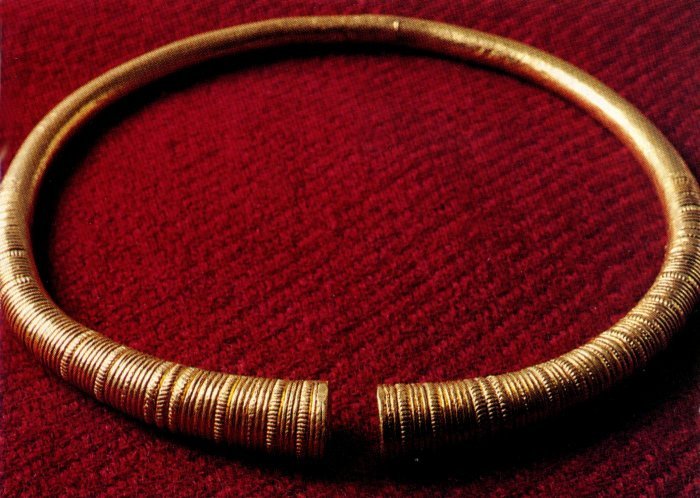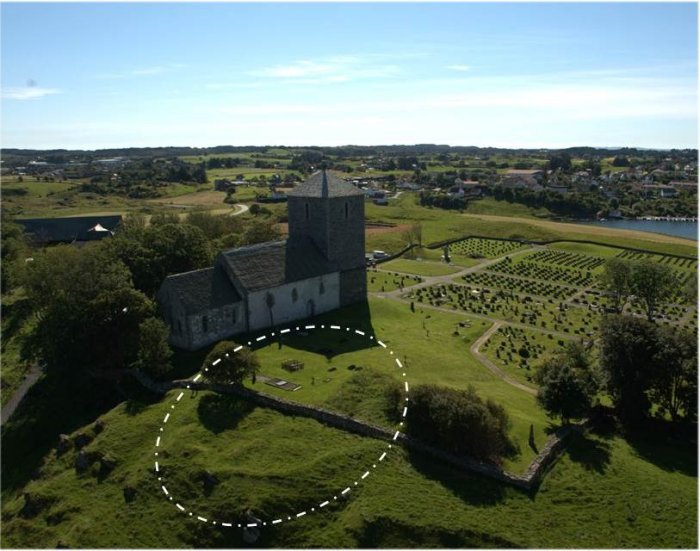The Flagmound was a huge, 5 meters high, burial mound located north of St. Olaf’s church. Outside the churchyard you can still see the lower remains of the mound.
The Flagmound was opened in 1835 and found to be a chieftains grave from around 250 AD. Inside the mound was built a chamber of stone. There lay a ruler in a coffin made of oak planks. Buried with him was more gold than has been found in any other grave from this period in the whole of Scandinavia. He was probably the first to be called king (Old Norse konungr) at Avaldsnes.
The most prominent burial gift was a huge neck ring made of solid gold weighing 590 gram. Neck bands like this were worn as the highest sign of rank that a ruler could have in this part of the world. Also seven finger rings of gold were found in the grave.
These objects give evidence of close contact with the Roman Empire. The same is true for the weapons: A lance, a spear, a shield boss covered with thick layers of silver, a bandoleer with beaten gold plates and a double-edged sword decorated with gilded plates of silver. Swords of this kind belonged to the Roman army.
The Flagmound prince might have been one of the Germanic chieftains who fought with – or against - the Roman army. He has also been associated with the 1000 warriors who were defeated in a battle at Illerup, Denmark.


